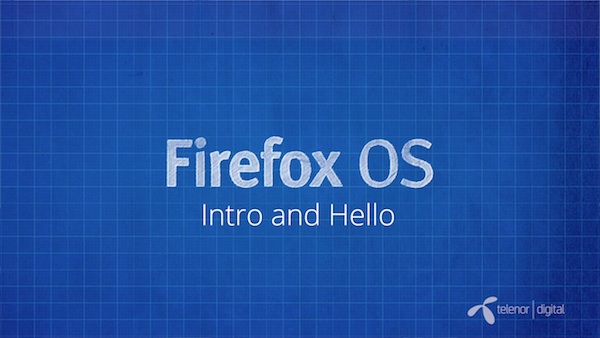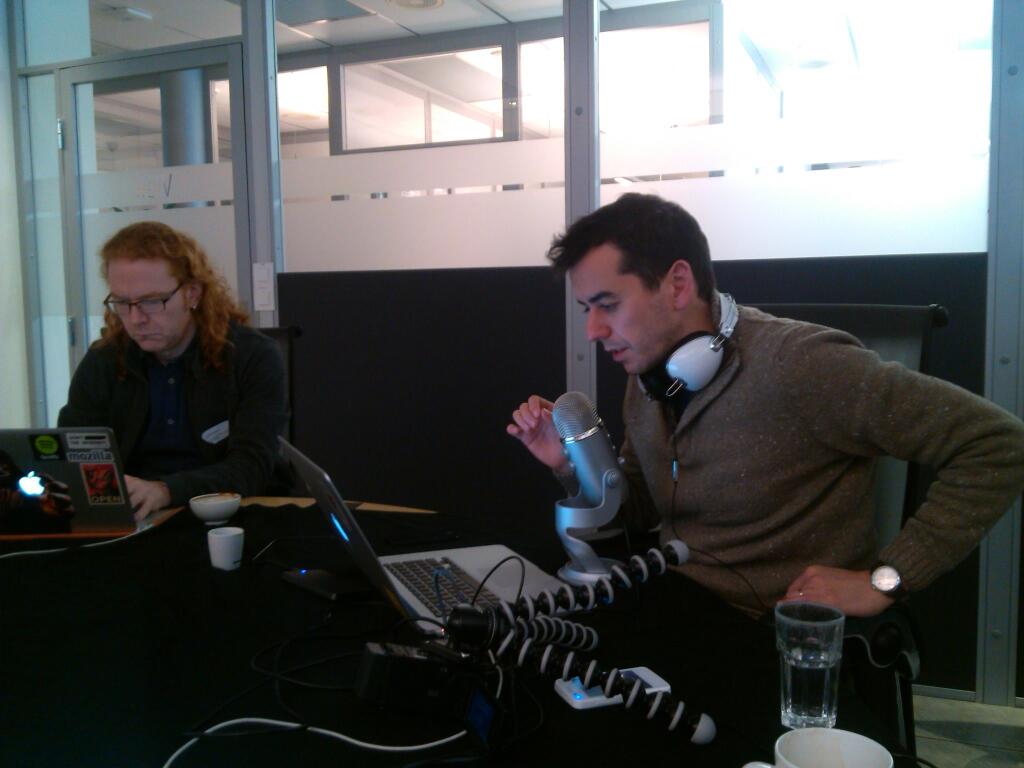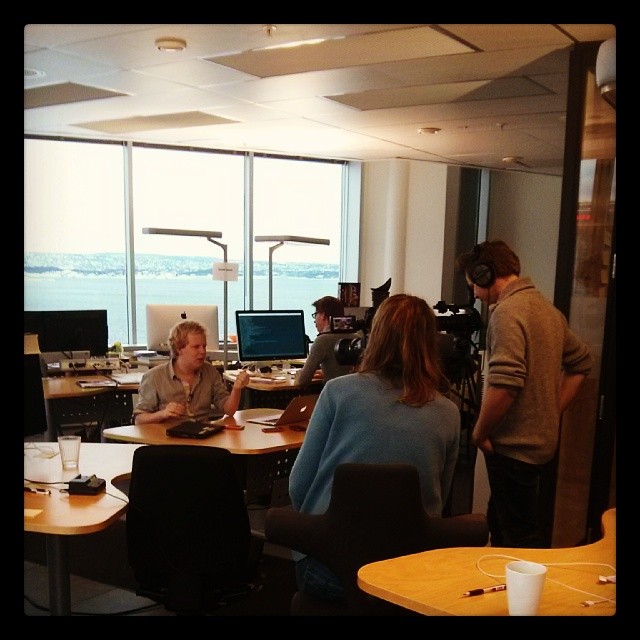Over the next few days we’ll release a series of screencasts explaining how to start your first Open Web App and develop for Firefox OS.

Each of the screencasts is terse enough to watch in a short break and the whole series should not take you more than an hour of your time. The series features Jan Jongboom (@janjongboom), Sergi Mansilla (@sergimansilla) of Telenor Digital and Chris Heilmann (@codepo8) of Mozilla and was shot in three days in Oslo, Norway at the offices of Telenor Digital in February 2014.
Here are the three of us telling you about the series and what to expect:
Firefox OS is an operating system that brings the web to mobile devices. Instead of being a new OS with new technologies and development environments it builds on standardised web technologies that have been in use for years now. If you are a web developer and you want to build a mobile app, Firefox OS gives you the tools to do so, without having to change your workflow or learn a totally new development environment. In this series of short videos, developers from Mozilla and Telenor met in Oslo, Norway to explain in a few steps how you can get started to build applications for FirefoxOS. You’ll learn:
- how to build your first application for Firefox OS
- how to debug and test your application both on the desktop and the real device
- how to get it listed in the marketplace
- how to use the APIs and special interfaces Firefox OS offers a JavaScript developer to take advantage of the hardware available in smartphones.
In addition to the screencasts, you can download the accompanying code samples from GitHub . If you want to try the code examples out for yourself, you will need to set up a very simple development environment. All you need is:
- A current version of Firefox (which comes out of the box with the developer tools you need) – we recommend getting Firefox Aurora or Nightly if you really want to play with the state-of-the-art technology.
- A text editor – in the screencasts we used Sublime Text, but any will do. If you want to be really web native, you can try Adobe Brackets.
- A local server or a server to push your demo files to. A few of the demo apps need HTTP connections instead of local ones.

Over the next few days we’ll cover the following topics:
- What makes a good HTML5 App? – It is more than a web site in a wrapper
- The App Manifest – turning a web page into an app with a simple JSON object
- The App manager and Firefox OS simulator – how to get started testing what your app looks like on a Firefox OS device and understanding the packaging format
- Testing on a real device – how to connect a phone to your computer and debug applications remotely
- Publishing to Marketplace – how to get your app listed so people can find it on their devices and the web
- Web APIs – how to access the hardware of a Firefox OS device from JavaScript
- Web Activities – how to build a ecosystem of apps on a device and how to use capabilities of other apps in your own
- Push Notifications – how to wake up apps remotely when new information is available for them
- Working offline – how to use AppCache, LocalStorage and IndexedDB to give users a real app experience
- Where to learn more – tells you how to get in contact with us and resources to go to.
In addition to the videos, you can also go to the Wiki page of the series to get extra information and links on the subjects covered.
Come back here to see the links appear day by day or follow us on Twitter at @mozhacks to get information when the next video is out.

Once the series is out, there’ll be a Wiki resource to get them all in one place. Telenor are also working on getting these videos dubbed in different languages. For now, stay tuned.
Many thanks to Sergi, Jan, Jakob, Ketil, Nathalie and Anne from Telenor to make all of this possible.
About Chris Heilmann
Evangelist for HTML5 and open web. Let's fix this!


18 comments